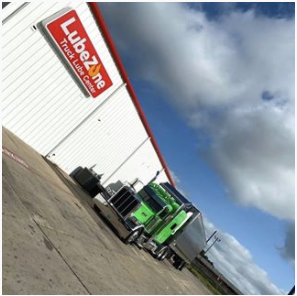
The Impact of Tire Pressure On Fuel Efficiency In Semi-Trucks
May 28, 2025
Diagnosing Low Oil Pressure in Semi Trucks
June 4, 2025Recently updated on October 14th, 2025
Semi-Truck Preventative Maintenance: Keep Your Rig Road Ready
As a truck driver, you know how important it is to keep your truck in great condition so you can stay on schedule and on budget for your clients. A big part of keeping your truck in great shape is a strict preventative maintenance approach that addresses issues before they arise. This strategy will help save you money and time by avoiding unexpected downtime, emergency repairs, and secondary damage that may occur when a component fails.
Secondly, you’ll save money in the long run by getting an extended lifespan out of your truck and your drivetrain. Each component failure that could have been avoided by preventative maintenance adds a bit more strain and impact on the peripheral parts, which, in turn, will negatively impact how your truck operates. Staying in front of component failures will keep your truck on the road for years to come.
You can also count on your truck operating more safely when it’s properly cared for, and your personal safety and the safety of those around you are impossible to put a dollar value on. When you are staying on top of maintenance tasks, you are also staying compliant with FMCSA regulations and making sure that you are reducing your liability risk in the event of an accident.
One simple way to think about how much preventative maintenance will save you is to think about how much each lost day costs you when your truck is in the shop for unexpected repairs. When you can plan downtime around your schedule, you can keep up with your schedule and keep the checks coming in, but when you break down on the side of a road, can’t complete your delivery, need to pay for a tow, and then your truck is out of commission until the repair is completed, every step is costing you money you don’t want to lose.
There is always the risk of an unexpected issue with your truck, but by staying on top of key maintenance areas, you can significantly reduce the risk while keeping your truck in great shape. In this guide, we’ll go over the importance of a few of these key areas, including:
- Tires: Pressure, alignment, and tread wear
- Engine: Oil changes, filter replacements, and performance tuning
- Brakes and suspension: Ensuring responsiveness and stability
- Electrical systems: Battery, wiring, and lighting checks
By prioritizing proactive maintenance, you’ll keep your truck road-ready while protecting your bottom line and keeping your deliveries on schedule. Take a look at this guide for some pointers on how to give your semi-truck the care it needs so you can stay on time and on budget while extending the life of your rig and improving your customer service by being reliable and dependable.
Understanding Preventative Maintenance
First off, what is preventative maintenance? At its most basic, preventative maintenance is the daily, weekly, or monthly care you give your truck that is designed to detect issues before they escalate and take care of routine needs to ensure that neglect doesn’t turn into costly repairs. It’s as simple as keeping up with things like making sure your tires are properly inflated. Get into your nearest LubeZone for oil changes at an appropriate schedule, stay on top of keeping your brakes functioning smoothly, and care for your electrical system.
According to the FMCSA, roughly 10% of accidents involving large trucks can be linked back to mechanical failures — a huge number when you consider all of the other variables you’re working with (and against) as a truck driver. Again, not all mechanical failures can be predicted and prevented, but it’s an easy number to reduce by staying on top of the basics and avoiding things like tire blowouts and brake failures, which top the list of common mechanical failures that contribute to accidents.
Think of it like this: replacing a $100 filter can save you thousands in repair costs down the road. Is it worth taking 30 minutes to replace a filter, or would you rather wait until something major happens and your truck is off the road for days, maybe weeks, waiting on new parts and costing you thousands in lost productivity and mechanical work? It’s a no-brainer.
Daily and Weekly Maintenance Checklists
As a trucker, you have a lot of responsibility — both on and off the road. The extra effort you put into keeping your truck properly maintained will keep you safer on the road, and you’ll end up with more money in your pocket at the end of the day when you aren’t paying for avoidable repairs.
Take a look at these checklists of some quick, easy tasks. The most challenging part about any of these is staying accountable to your schedule, but that’s beyond the scope of this article!
Key Items for Daily Preventive Maintenance
Fluids
Check your oil and coolant levels. Note their color. If they look dirty or you notice sediment in the fluids, it could indicate a leak in your system, or your filters might need to be replaced. This is a clear message to get your truck to LubeZone for a complete check.
Tires
Use a calibrated gauge to make sure that each tire has the correct PSI. Make note of any tire that keeps losing pressure, because it may indicate a small leak that could be patched. In colder weather, it’s a good idea to check PSI in the morning. Every 10º will account for a change in 1-2 PSI. Also, look for signs of visible wear and damage like cuts, bulging sidewalls, or embedded debris.
Brakes and Air Systems
When you are testing your brakes, roll your windows down, turn off the blowers on your air conditioning, and shut off the stereo. Listen for any unusual sounds, such as air leaks. Then test the brakes for stopping response time. If the brake pedal is spongy and slow to stop the vehicle, it could be caused by water in the air tanks, which should subsequently be drained.
You should also confirm that the air tanks are able to maintain the correct pressure.
Lights
Make sure your headlights, brakes, and indicators are all working correctly. A great idea is to rig up mirrors behind where you park your truck so you can confirm that all lights are operational without needing to enlist a friend to hit the brake pedal while you check to make sure the lights are activating.
Key Items for Weekly Preventative Maintenance
Battery Health
Check your batteries every week, looking out for corrosion on the terminals and checking to make sure that the connections are still secure.
Be sure to check the gauge on your charging system regularly. If it’s not working, test your system’s voltage output using a multimeter.
Undercarriage Inspection
You can either use a mirror or a good, old fashioned crawl under your truck to check for fluid and staining that might indicate a leak, as well as things like loose fittings or debris stuck under the chassis that can cause damage.
Cargo Securement
Inspect all of your mount points, straps, chains, ratchets, and locks for signs of wear, fraying, rubbing, or loosening. A new ratchet strap costs a fraction of what it costs when a load is damaged.
Tire Maintenance: More Important Than Many Realize
Every part of your semi-truck suffers from a lot of wear and tear, but whether you’re climbing, descending, coasting, shifting through traffic, or sitting idle, your tires are ALWAYS at work. Preventative maintenance means taking care of the most obvious sources of problems, and as a trucker, you have 18 reasons to keep a close eye on your tires.
Even if you don’t have a blowout, poorly maintained tires can lead to uneven wear, which can cause issues with your vehicle’s alignment and affect driveability. Underinflated tires lead to poor fuel efficiency, and overinflated tires that are stretched beyond their capacity due to the combination of heat from the sun, asphalt, and friction can lead to a breaking point, resulting in tire failure.
Take a look at some of the key areas to pay attention to when it comes to preventative tire maintenance:
Understanding Tire Specifications and Ratings
As we already mentioned, your tires are the foundation of your truck’s performance. It’s important that you understand their specifications so you’re using the right tire and taking care of them the way they need.
Reading Tire Markings
Every tire has a code imprinted on the side, such as 295/75R22.5, which tells you a lot:
- 295: Tire width in millimeters
- 75: Aspect ratio, or the sidewall height as a percentage of width
- R: Radial construction (meaning the steel belts run from sidewall to sidewall instead of perpendicular to the tread)
- 22.5: Rim diameter in inches

Image via Wikipedia
Load and Speed Ratings
Your tire’s load index is the maximum weight it can carry safely without an increased risk of blowout or other failures.
- A load index of 144 supports roughly 6,175 lbs per tire.
- A load index of 144/142L shows that each tire can handle 6,175 pounds in a single configuration or 6,065 pounds in a dual configuration
A semi-truck tire is also speed-rated. The most common ratings are L for 75 mph and M for 81 mph.
Tire Matching
Always make sure that you match your tires across axles so you can avoid uneven wear and an increased risk of handling issues. This means knowing where to shop for your specific model, especially if you use an uncommon tire that you won’t be able to find a replacement for on the road easily.
Optimal PSI and Pressure Monitoring
Keeping your tires properly inflated is one of the easiest and most impactful pieces of preventative maintenance and tire care:
Recommended PSI Ranges
Your steering tires will usually need between 105-110 PSI to evenly distribute the weight of your front end while getting the best grip for safe handling. Any higher, and you’ll have a very rough ride; any lower, you’ll start to bulge your sidewalls, which hurts handling. Over- and underinflation can both lead to a blowout.
Your drive and trailer tires typically need between 95-100 PSI, depending on the load you’re carrying.
As with everything relating to your rig, make sure you check your specific tires to determine the optimal PSI range.
Factors that Impact PSI
The temperature will have a significant impact on your PSI, and a difference of 10ºF will result in a change of 1+ PSI. When your truck is overloaded, you’ll increase the PSI of your tires, which will add additional stress, increase heat buildup, and may lead to a blowout.
Using a Tire Pressure Monitoring System
Your onboard TPMS will give you real-time data right on your dash so you can stay aware of all tire conditions and PSI while on the move. They will alert you if there are any hazardous fluctuations.
Best Practices for Tire Care
Taking proper care of your tires will help extend their lives and keep you safe on the road:
Rotate Your Tires
Your tires will develop uneven wear patterns based on where they are mounted on your truck. Rotating them will help evenly distribute the wear so you can get more life out of them while staying safe.
It’s often suggested that you rotate your tires every 30,000 miles or at every other service interval.
Monitor Your Tread Depths
Per the FMCSA, your steer tires can have a minimum of 4/32″, and your drive and trailer tires can have a minimum of 2/32″. Check your tread depths using a specialized gauge or with the “penny test:” using a penny, put Lincoln’s head upside down. If you can see the top of his head, it’s time to replace your tire.
Inspect for Damage
Look for signs of damage and dangerous wear, like cuts, cracks, or bulges in your sidewall. Also, check your treads for embedded objects like nails or screws that can cause slow leaks. If you have a specific tire that regularly loses air, this might be a good place to start looking.
You can retreat or replace tires with extensive damage, or you may be able to patch a small puncture before it turns into a bigger issue.
Retreading Tires
Retreading is a cost-effective way to save on your tire expenses, which makes it an economical choice. Only retread tires that have structurally sound casings.

Alignment and Balance
Misalignment can cause uneven wear on your tires, which will greatly impact your fuel efficiency, handling, and the longevity of your tires. Check your alignment whenever you start to notice uneven wear and during your scheduled service.
Unbalanced tires can cause a lot of vibration, which will cause your tires to wear out prematurely and cause unnecessary stress on your suspension and front end.
Emergency Tire Situations
No matter how well you care for your tires, there is always a chance you’ll find yourself dealing with an emergency. Here are a few of the most common, and some steps to take in order to stay safe:
Tire Blowouts

In a blowout, it’s important to keep your cool and think quickly.
- Keep Control of Steering: Don’t make any sudden movements or jerk your wheel around. Gradually slow down, keeping a firm grip on the wheel, and come to a stop where safe.
- Get To Safety: Pull your truck into the breakdown lane or the shoulder. Turn on your hazards as you navigate across lanes.
- Set Out Your Warning Device: FMCSA §392.22 guidelines require that you set out reflective triangles and/or flares at an appropriate distance to warn oncoming traffic of a hazard ahead
Safe Tire Changes
Once you’ve gotten yourself to a safe place, follow these steps to ensure your tire can be changed:
- Wear High-Vis Clothing: Ensure that other drivers can see you, in addition to your flares, especially at night, during times of poor visibility, or in low-light conditions.
- Contact Roadside Assistance: Since many drivers lack the proper tools to perform a tire change on their own, calling a professional crew with the necessary equipment can help you get back on the road without requiring a tow.
Count on LubeZone For Your Preventative Maintenance Needs
Preventative maintenance is the backbone of caring for your semi-truck and keeping it road-ready. By staying on top of possible issues like tire wear, engine health, brake performance, electrical systems, and any other indicators that your truck needs some attention, you’ll avoid expensive and unexpected repairs while enjoying a safe and reliable driving experience. Making sure you are staying on top of these tasks can be challenging, but having a trusted partner to support your preventative maintenance needs can make all the difference.
We’re Here To Care For Your Tires
We offer services specifically for maintaining your tires. When you’re in for service, make sure to have us:
- Inspect your treads to ensure compliance and safety
- Monitor your PSI levels to avoid blowouts and improve your fuel efficiency
- Check your tires for any signs of damage, including cuts, punctures, bulges, and other areas of concern
- Rotate your tires to avoid wearing out one area of a tire without getting the most out of the entire tread
- Replace your tires with new or retreaded options to fit your budget and needs
You can count on LubeZone to keep your truck in great working shape so you can continue to deliver exceptional customer service and on-time deliveries. We offer fast, reliable, professional services that are designed to meet your needs, whether you’re a fleet manager or owner-operator. When you need to check fluid levels, get an oil change, conduct a truck and trailer inspection, require a filter replacement, or just need another set of eyes under the hood, we’re here for you.
Why Choose LubeZone?
We specialize in semi-trucks, so our team understands the specific needs and demands of your heavy-duty rig. We have many centers across the country, meaning you can pop in on a return trip or bring your truck by your home service center when it’s most convenient for you. Finally, our quick and efficient services are meant to save you time, so you can count on high-quality care with minimum downtime.
Find your nearest LubeZone location, and come by today!

LubeZone is the fastest growing dedicated semi-truck service in the United States with locations in Texas, California, Oklahoma, North Carolina and Georgia. Our preventative maintenance solutions are designed to get the professional driver back on the road FAST.



